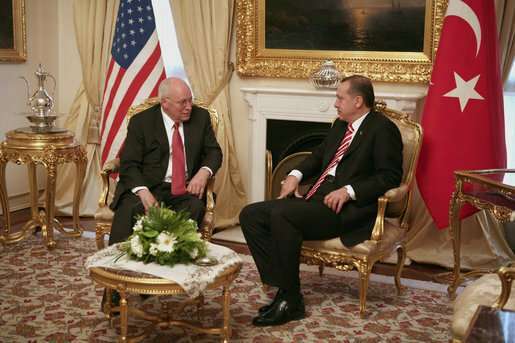Erdogan’s arrival to Belgrade is part of a two-day visit, which is itself part of a greater three-day visit to the region, is seen as an important step toward mediating head-butting with Kosovo (and de facto Albania) while also ostensibly sealing a drone deal that may be seen as ironic among some foreign observers.
But first, just how key is the visit? With Serbian Deputy Foreign Minister Nejmanja Starovic hyping up the summit as the meeting of the region’s two most important politicians, let’s just say it’s … important. And difficult to argue otherwise. Turkey’s influence in terms of politics and trade with regard to Albania is considerable, and here it pays to remember that even during the war in Yugoslavia, displaced Bosniaks often de facto referred to themselves as de facto displaced Turks.
At any rate, with Erdogan having stated that his primary goal is to ease tensions in Bosnia and Herzegovina while also mediating between Belgrade and Pristina, the critical factors of his visit cannot be underrated.
Moreover, there is the issue of the now famous (or infamous) Bayraktar TB2 combat drones, which are seen to have greatly aided the defense of Kyiv during the first stages of the war in Ukraine. And although much credence is now given to the introduction of US HIMARS rocket systems, the Bayraktar option is still seen as highly effective and cost-conscious—and, at least according to media reports–greatly desired by Serbia.
Which also means that the tightrope of international relations continues. France and Germany continue to prod—officially and publicly—for a normalization of relations in Kosovo. Brnabic has her own balancing act to follow at home with coming recommendations for a new Cabinet while ostensibly attempting to better relations with Albania. And while Serbian President Aleksandar Vucic has long been seen as either a stabile factor or simply a long-surviving strongman, Serbia’s dependence on Russian gas (and support for Russia at home) does him no favors when dealing with either Gazprom or an Erdogan sale’s trip.
This does not mean that the tightrope cannot be walked. A gas pipeline from Azerbaijan is reportedly on the way. Also, Brnabic’s forays have also been clearly to emphasize the support for Serbs in Kosovo and Metohija–and Brnabic’s sales pitch has also been smart, with the new PM noting that peace had been maintained even while also emphasizing that she felt “as if she were back home.”
The latter may be seen as a not-so-subtle reminder to the EU that many Serbs do indeed believe Kosovo to be at least symbolically “home,” although, considering years of news headlines referring to Kosovo and also Bosnia Herzegovina as a “tinderbox,” there is something to her reminder that nothing since the war in Kosovo has yet completely gone awry. And here even the EU must admit this is an accomplishment, considering the fact that Serbs have faced ID and car registration issues and even been denied locally the right to vote.
Which means that both Vucic and Brnabic are again showing a keen sense of savvy in what can arguably be said to be a never-ending lead-up to potentially earth shaking (in the Balkans and beyond) decisions.
But, as they say, you talk the talk and then walk the walk. Which means it will be the follow through—on a tightrope—that counts.
File photo of former US Vice President Dick Cheney meeting with Erdogan courtesy of the US White House/White House photo by David Bohrer, Public domain, via Wikimedia Commons.
